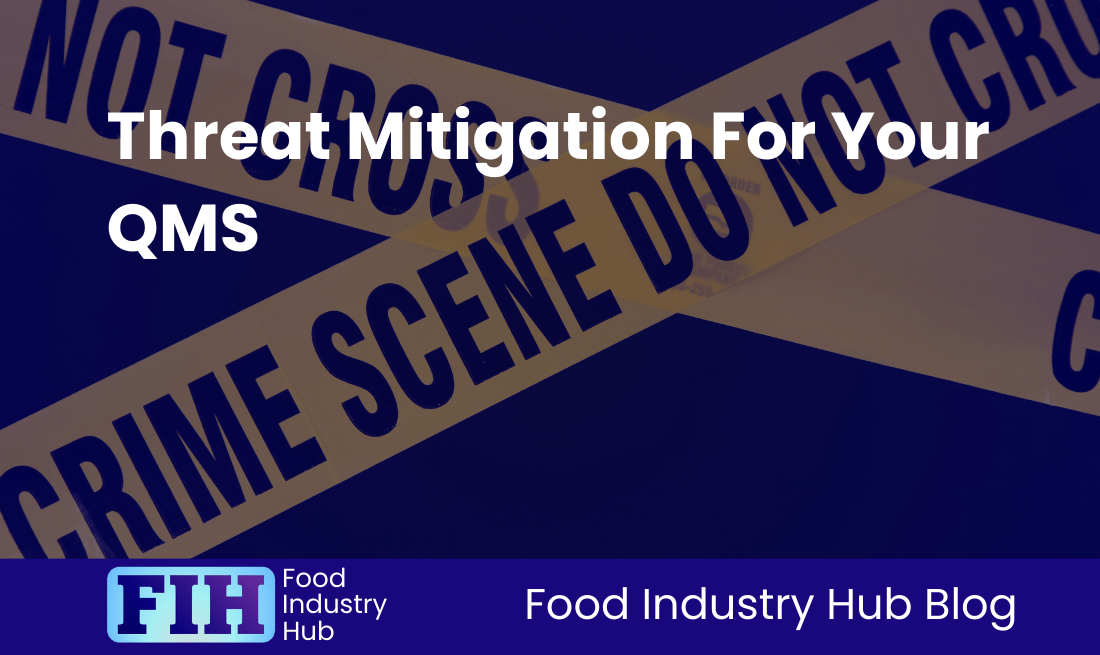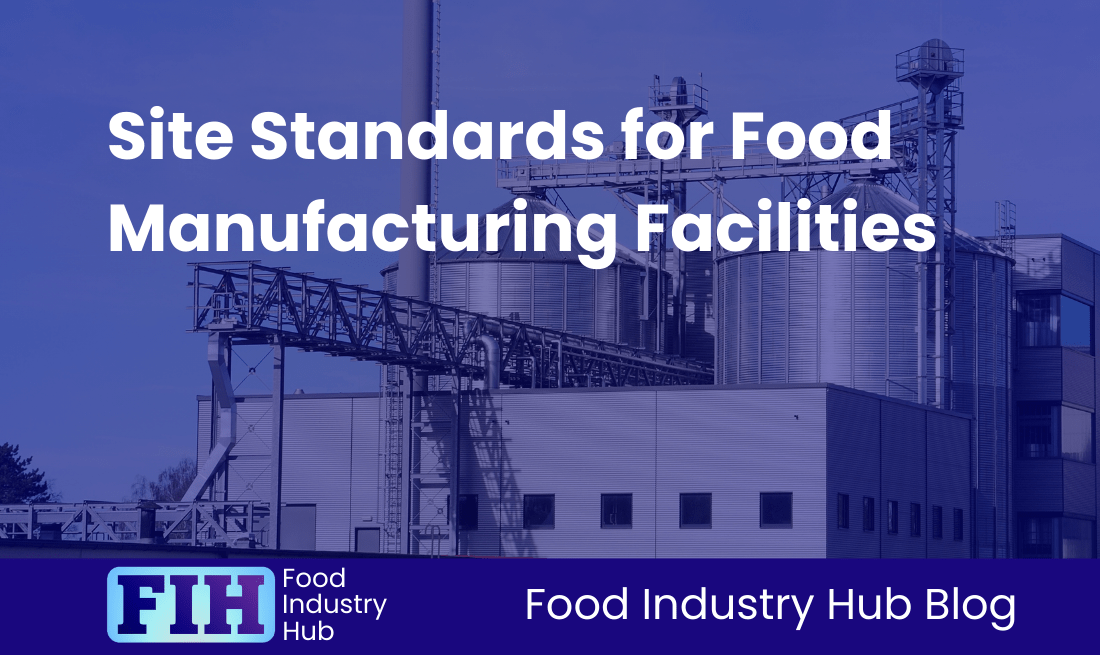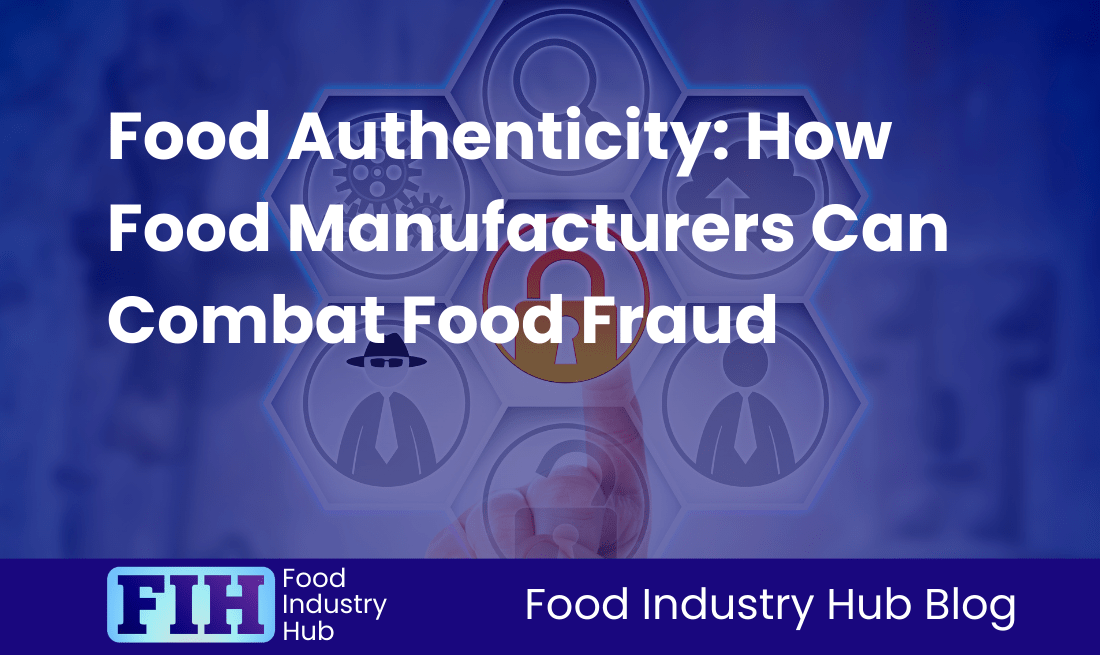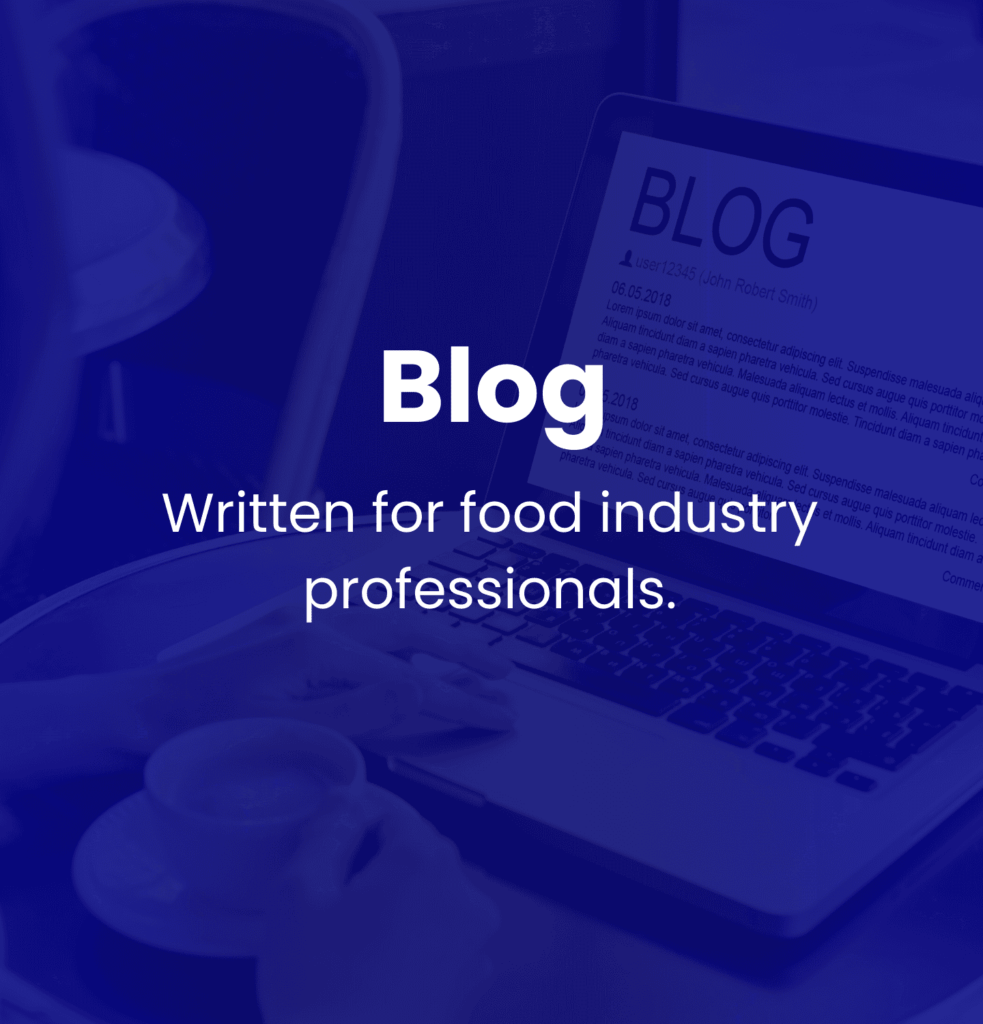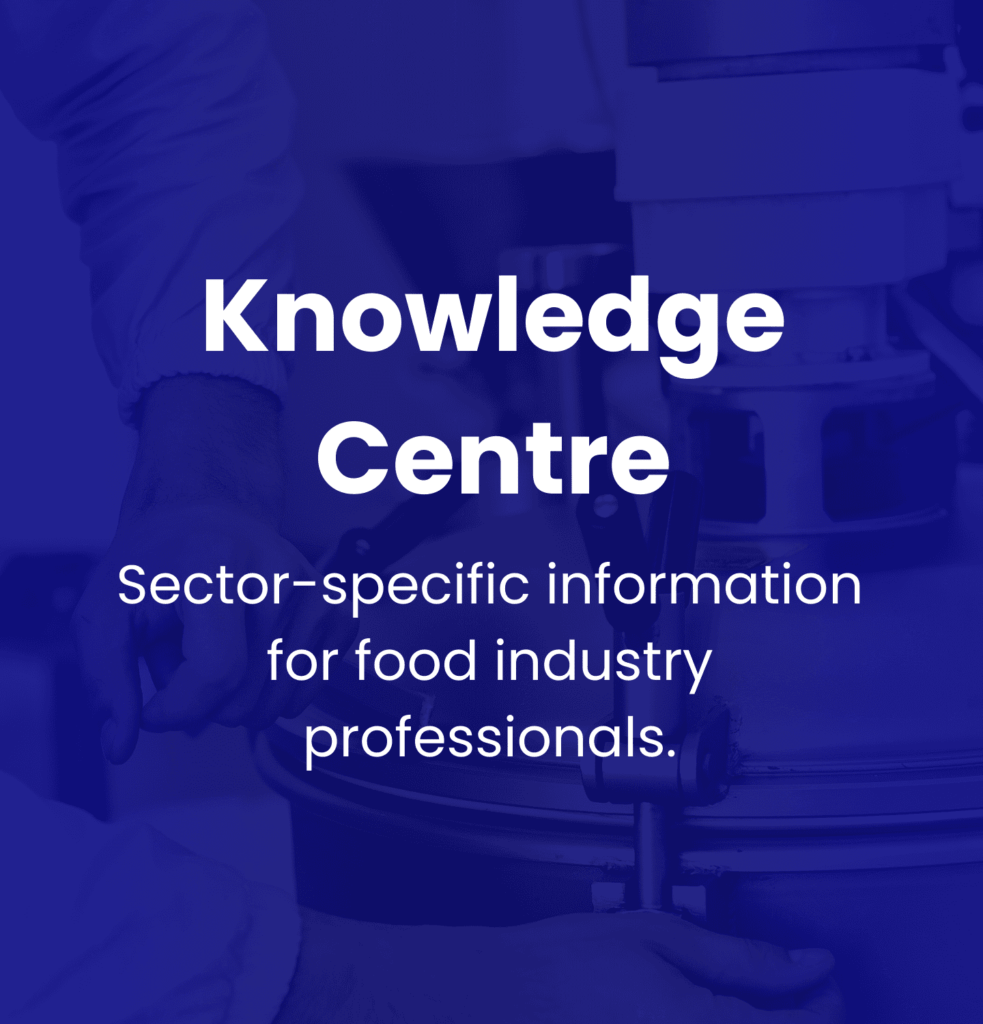Know: Food Defense (TACCP)
Introduction
In the complicated and unpredictable global food supply landscape of today, the safety and integrity of food products are of core importance. The growing threats to food safety stem from both natural vulnerabilities and deliberate acts of sabotage. Within this landscape of difficulties, a key strategy known as Food Defense surfaces, where Threat Assessment and Critical Control Points (TACCP) act as a vital functional gear in the clockwork.
The Importance of Food Safety
Prioritising food safety extends beyond the basic duty of averting unintentional contamination. It also incorporates the responsibility to protect the food supply chain from intentional acts that can undermine its integrity. The tight-knit character and susceptibility of food systems underscore the need for defending them against deliberate contamination – a measure pivotal to maintaining the trust of consumers and preserving public health.
Explanation of Food Defense (TACCP)
TACCP, or Threat Assessment and Critical Control Points, serves as a methodical means of securing the food supply chain from calculated acts of contamination. Unalike to conventional safety measures in food handling that concentrate on accidental hazards, TACCP targets deliberate actions such as product tampering, ingredient substitution, and malicious adulteration sparked by ideological or economic incentives. Through recognising these vulnerabilities and establishing controls, TACCP complements existing food safety methods like HACCP.
Contribution of TACCP
By evaluating the risks associated with intentional contamination all along the food supply chain, TACCP significantly enhances the safety, quality, legitimacy, and authenticity of food items. For instance, it pinpoints threats that could originate from disgruntled employees or malicious external agents. By diminishing these risks, TACCP contributes to delivering safe food products to consumers, thereby holding up the food market’s reputation. Implementing TACCP further aids regulatory compliance, hence, playing a key role in meeting health standards. Shielding against deliberate contamination reinforces business integrity, thereby, supporting important facets like reputation and legitimacy that are essential for lasting success.
Context: Basic Principles, Regulatory Environment, Operational Approaches, and Upcoming Trends
TACCP plays an instrumental role within an expansive food defense framework, managing hazards through comprehensive threat assessments and enforcing security protocols. Important considerations entail aligning with regulatory structures such as the British Standards Institution’s PAS 96:2014 and the FDA’s FSMA Final Rule. Both frameworks underline threat assessments and risk mitigation strategies. Operational approaches include establishing specialised teams to evaluate threats and pinpoint control points, thereby enhancing physical and procedural measures to avert intentional contamination. As the food industry undergoes continuous evolution, integration of TACCP with novel technologies and risk assessment tools is gaining prominence, thereby contributing to a more resilient supply chain.
With the food landscape ever-changing in our globalised world, the role of TACCP in strengthening food defense strategies surges, providing a resilient foundation for safeguarding the food supply chain against deliberate threats.
Key Takeaways
The interaction of TACCP (Threat Assessment and Critical Control Points), HACCP (Hazard Analysis and Critical Control Points), and VACCP (Vulnerability Assessment and Critical Control Points) contributes to a comprehensive framework for enhancing food safety. Each system serves a unique function: HACCP targets foodborne hazards, VACCP handles food fraud vulnerabilities, and TACCP addresses threats of intentional contamination, for instance, sabotage. Collectively, these systems create a strong line of defence in the food supply chain, managing a range of food safety risks.
Regulatory Influence
Regulatory bodies significantly shape TACCP expectations through established standards such as FSSC 22000 and USDA guidelines. These regulations not only raise the standard for food safety but also emphasise the need to consider potential intentional contamination threats. Being compliant with these standards is essential for maintaining consistency and credibility in the global food market.
Essential Elements of a Food Defense Plan
A well-organised Food Defense Plan comprises several pivotal elements. These cover comprehensive threat assessment processes to pinpoint potential risks, effective strategies to lessen these threats, and consistent monitoring and verification procedures to ensure the measures continue to be effective. Each component collaboratively contributes to a safer food production environment.
Risk-Based Approach to Food Defense
Adopting a risk-based approach is key to establishing a successful food defense system. This method allows for the identification and prioritising of vulnerabilities based on potential impact, which in turn enables organisations to allocate resources efficiently and focus on the most significant risks.
Current Trends in TACCP
Current trends shaping the future of TACCP include a growing reliance on digital technologies, enhancing monitoring and traceability capabilities, and a drive towards international standardisation of food safety practices. These trends are transforming how organisations implement food defense strategies, promoting consistency and efficiency in managing safety across various regions and sectors.
Food Industry Hub Management Systems can significantly boost the effectiveness of your food safety and quality management system, leading to improved confidence and elevated quality assurance throughout your operations.
Understanding the Basics of TACCP
In the realm of food safety management within the manufacturing industry, HACCP (Hazard Analysis and Critical Control Points), TACCP (Threat Assessment and Critical Control Points), and VACCP (Vulnerability Assessment and Critical Control Points) are integral components. Each has a distinct role and impact, hail from unique perspectives and approach food integrity with separate lenses.
TACCP, HACCP, and VACCP: Unique Contributions to Food Safety Management
Within the food production process, the primary focus of HACCP is on tackling unintentional hazards, which range from chemical to biological, radiological, and physical contaminants. HACCP targets these hazards through its seven principles, which help in establishing Critical Control Points (CCPs) and minimising risks.
TACCP specifically aims to prevent intentional contamination or threats, including terrorism and intentional product tampering. This framework highlights the key importance of assessing potential threats, identifying where systems are vulnerable and implementing controls to safeguard the food supply against deliberate harm. By focusing on managing intentional threats and addressing them through robust measures, organisations can bolster their overall food defense strategy.
VACCP stands out with its emphasis on countering food fraud and ensuring product authenticity. This framework caters to vulnerabilities that might lead to economically driven adulteration. It takes a holistic approach by identifying potential risks in the supply chain and addressing them, ensuring that the integrity and authenticity of food products are maintained.
Intention vs. Vulnerability in Food Production
In the context of food safety strategies, it’s important to distinguish between intentional contamination threats and system vulnerabilities:
- Intentional Contamination represents deliberate actions with harmful intent, which might compromise food safety for various reasons, such as ideological beliefs or economic advantage. TACCP plays a vital role in mitigating these serious threats by determining potential risks and setting up robust security measures designed to detect and prevent malicious acts.
- Vulnerabilities indicate inherent weaknesses in food production systems that potentially can be exploited for unethical practices, such as food fraud. Specifically targeting these vulnerabilities, VACCP aims to prevent opportunities for fraud that arise due to systemic shortcomings. These weaknesses might include gaps in supply chain security, insufficient traceability measures or an absence of authentication processes.
Nature of Threats in TACCP
TACCP is designed to combat a broad spectrum of threats that could put food supply chains at risk:
- Internal Threats: These might be posed by employees with harmful intentions, such as disgruntled workers. Such internal threats could include sabotaging production processes or compromising safety measures.
- External Threats: This category encompasses a wide array of risks, from terrorism to product tampering and other forms of sabotage aimed at disrupting the operational integrity of food manufacturing facilities.
- Economically Motivated Adulteration (EMA): Another area that TACCP caters to is EMA, where deception for financial gain, such as ingredient substitution or misleading labeling practices, pose substantial threats to product authenticity and public health.
Key Terminology in TACCP
When discussing TACCP, understanding several key terms, such as Critical Control Points (CCPs) and Threat Characterisation, is essential:
- Critical Control Points (CCPs): In the context of TACCP, CCPs are influential points within the production process where controls can be implemented to prevent or minimise the risks of intentional contamination. Ongoing assessments of potential threats and related vulnerabilities are necessary for identifying these CCPs.
- Threat Characterisation: This systematic approach involves understanding and evaluating potential threats based on their nature, motivations, and capabilities. Characterising threats effectively can assist in prioritising response strategies and allocating resources, thus ensuring a robust food defense plan.
By understanding and applying these key terms, organisations can develop potent food defense strategies that enhance the security and integrity of their supply chains, putting robust safeguards in place against intentional contamination and inherent system vulnerabilities.
Regulatory Frameworks and Compliance Standards
Overview of Regulatory Guidelines
In food defense, especially when dealing with Threat Assessment and Critical Control Points (TACCP), there is notable variation in regulatory frameworks between the UK, EU, and USA. Each of these is designed to safeguard and uphold the integrity of the food supply chain.
In the UK, food safety is largely regulated by the Food Standards Agency (FSA). This agency has set up a broad range of regulations to maintain food hygiene and consumer protection. Although the UK has retained several EU standards after Brexit, it is moving towards establishing independent regulatory norms. This could potentially complicate compliance for businesses operating in both jurisdictions [Source: AIB International]. The Fraud Act 2006 Covers food fraud involving deliberate deception, false representation, or abuse of position [Source: Kingsley Napley]. The National Food Crime Unit (NFCU) Operates under the FSA to prevent, detect, and investigate food crime; with a focus on crimes such as adulteration, misrepresentation, theft, document fraud, unlawful processing, waste diversion, and substitution [Source: FSA] [Source: Food Safety].
The regulatory framework within the EU is governed primarily by the General Food Law (Regulation (EC) No 178/2002). This legislation emphasises traceability, safety, and the implementation of HACCP (Hazard Analysis Critical Control Points). Compliance with these regulations requires strict adherence to safety protocols across the food supply chain. Moreover, the EU tends to adopt a more guarded approach towards genetic modifications and certain food additives, often imposing more restrictive limits compared to the USA [Source: RDR Global Partners].
Food safety regulations in the USA are executed by various agencies, including the Food and Drug Administration (FDA) and the Department of Agriculture (USDA). The Food Safety Modernization Act (FSMA) focuses on proactive food safety measures, including TACCP principles. The FDA has created resources such as the Mitigation Strategies Database to help food manufacturers establish effective defenses against intentional contamination [Source: ClearBorder]. In the United States, several regulations address food crime and food defense, primarily through the Food and Drug Administration (FDA) and its enforcement mechanisms. These regulations aim to prevent economically motivated adulteration, intentional adulteration, and other threats to the food supply [Source: FDA] [Source: FDA] [Source: FDA].
IFS Food Defense Guidelines
The IFS (International Featured Standard) Food Defense Guidelines use well-founded principles of risk assessment and management, aiding manufacturers in identifying potential threats effectively. Embedding IFS standards not only heightens product security but can also enhance a manufacturer’s reputation and pave the way for smoother entry into global markets [Source: IFS].
PAS 96:2017
PAS 96:2017 is a British Standard specifically created to counter deliberate contamination of food and drink. It lays out a structured framework for food businesses in the UK and EU to systematically assess risks and implement appropriate security measures. Aligning with the practices outlined in PAS 96:2017 boosts food defense strategies and aids in both regulatory compliance and meeting industry standards. This is essential to maintain customer trust and adhere to regulatory norms across diverse markets [Source: FSA].
Terminologies Relevant for Compliance
Regulatory Terms
Developing an understanding of key regulatory terms is a crucial part of achieving effective compliance in food manufacturing:
- Mitigation Strategies Database (FDA): This comprehensive resource provides strategies to help food facilities prevent and deal with intentional contamination risks. It holds significant value in implementing potent food defense practices within TACCP frameworks [Source: FDA].
- BRCGS Food Safety Standard: The globally recognised British Retail Consortium Global Standards (BRCGS) Food Safety Standard includes detailed requirements for food safety management systems. This standard stresses the importance of risk assessment and hazard control in line with TACCP principles, providing methods to mitigate risks that may compromise food safety and integrity.
Armed with a thorough understanding of these guidelines and terminology, food manufacturers can competently navigate the intricacies of food defense regulations, ensuring they meet compliance standards and sustain consumer trust in a highly scrutinised market.
Sign-up for the Food Industry Hub Mail Service
We regularly produce new content for food industry professionals, and the Food Industry Hub Mail Service is the best way to stay up to date with the latest additions.
Signup today to be added to the Food Industry Hub mailing list.
Main Components of a Food Defense Plan
For food manufacturing companies, a substantial food defense plan is instrumental in defending against deliberate adulteration. This section provides an overview of the major components and important considerations for developing a proficient food defense strategy.
1. Vulnerability Assessment
A vulnerability assessment is a key starting point; it highlights potential risks within a facility’s operations. The commonly used CARVER + Shock method assesses six important attributes: Criticality, Accessibility, Recuperability, Vulnerability, Effect, and Recognizability, supplemented by an analysis of psychological impacts labelled as “Shock” [Source: FDA]. This analysis is best executed by a diverse team comprising of food production, toxicology, epidemiology, and risk assessment experts, facilitating a well-rounded understanding of vulnerabilities. Additionally, tools like the FDA’s Food Defense Plan Builder offer structured, personalised assessments to address specific vulnerabilities within varied operations [Source: FDA].
2. Adoption of Mitigation Measures
Following the identification of vulnerabilities, the next progression involves the establishment of effective mitigation measures aimed at curtailing risks associated with the previously identified threats. Important strategies encompass:
- Enhanced Hiring Practices: Comprehensive background checks help screen potential employees who might pose an insider threat.
- Physical Security Enhancements: Advanced security measures such as access controls, surveillance systems, and secure facility layouts deter unauthorised intrusion and minimise risks associated with insider threats.
- Operational Procedures: Developing clear protocols for reporting suspicious activities ensures all staff comprehend their responsibilities regarding food defense and operational security.
Integrating these mitigation measures with existing Good Manufacturing Practices (GMPs) or Hazard Analysis Critical Control Points (HACCP) strengthens the defense against deliberate adulteration, thereby complying with regulations such as the Food Safety Modernisation Act (FSMA) and its Deliberate Adulteration rule.
3. Continuous Monitoring
Persistent monitoring is essential for ensuring the effectiveness of mitigation measures. This comprises of:
- Routine Inspections: Regular examination of security protocols and operational procedures verifies their effective implementation.
- Real-Time Data Tracking: Automated systems for continuous monitoring swiftly detect irregularities, indicating potential breaches.
- Third-Party Audits: Independent auditors objectively evaluate food defense practices, identifying areas for improvement, and ensuring adherence to established standards.
Ongoing evaluation enables organisations to remain adaptable and responsive to emerging vulnerabilities as operations evolve and threats change.
4. Employee Security
A pivotal aspect of any food defense plan is the security of its employees. Noteworthy initiatives in this area comprise of:
- Training Programs: Regular training sessions equip employees with the ability to discern and respond effectively to suspicious activities, promoting an informed workforce that acknowledges their role in food defense.
- Screening Procedures: Rigorous hiring procedures, inclusive of extensive background checks, help identify potential insider threats that could undermine food safety.
Establishing a vigilant culture among the employees enhances the organisation’s security posture, making each individual a guardian of food safety.
Key Terms in Defence Planning
Understanding the terminology associated with food defense planning is essential for all professionals involved in developing and executing a robust food defense plan.
1. Key Planning Terms
- External Security Measures: These include physical barriers and security systems intended to protect facilities from external threats. Examples include surveillance cameras, boundary fencing, and controlled entry points to prevent unauthorised access.
- Internal Security Measures: These strategies aim to address insider threats. They cover access controls, strict supervision of sensitive areas within the facility, and employee vetting procedures designed to prevent insider threats from harming food safety.
Corrective Action Plans: These are predefined procedures that detail the steps to be taken in the event of breaches in security protocols. Such plans expedite the response to potential breaches and are instrumental in maintaining compliance with regulatory standards, such as that established by the FDA under the FSMA.
Incorporating a clear understanding of these terms into daily operations is important for developing a robust food defense strategy that not only aids in compliance with food safety regulations but also bolsters consumer trust in the safety of food products.
Interlinking with Food Safety Systems
Confluence with HACCP
The merging of Threat Assessment Critical Control Points (TACCP) with Hazard Analysis Critical Control Points (HACCP) significantly enhances food safety management systems. HACCP primarily addresses unintentional contamination from biological, chemical, and physical hazards, while TACCP zeroes in on intentional adulteration risks, such as sabotage or terrorism, that threaten food safety and security [Source: SCS Global Services].
Integration of these systems allows companies to streamline risk assessments, thereby unifying identification of hazards, vulnerabilities, and threats under one system. This collaborative approach reduces unnecessary overlaps and encourages teamwork among quality assurance, security, and human resources teams, enabling a comprehensive response to potential contamination risks. Additionally, the integration optimises operational procedures by ensuring that both HACCP and TACCP protocols are effectively monitored and consistently updated to abide by changing regulatory requirements.
Coherent Documentation
In the field of food safety management, well-organised documentation plays a significant role in ensuring compliance and facilitating effective communication. A streamlined method of documenting HACCP and TACCP procedures helps cover all aspects of food safety thoroughly. Efficiently managed paperwork bolsters regulatory compliance by easing audits, inspections, and training processes.
Effective documentation also improves visibility across different departments, providing clarity for protocols and responsibilities. Regularly organised records shore up compliance with not only internal policies but also external standards such as those stipulated in ISO 22000 [Source: Leatherhead Food Research]. This systematic approach prevents miscommunication within teams, leading to improved incident response times and operational effectiveness.
Crisis Management
Incorporating TACCP frameworks into crisis management plans is essential for preparedness against possible incidents of intentional contamination. This integration demands precise identification of potential threats during TACCP assessments, enabling organisations to establish specific emergency response protocols that effectively address these risks.
By assimilating TACCP into broader crisis management strategies, organisations can guarantee that emergency actions are promptly and efficiently enacted to protect public health and maintain business continuity. A well-designed crisis management plan, inclusive of communication strategies, containment measures and corrective actions, can mitigate the influence of a crisis on operations and reassure public trust after an incident.
Key Terminology in Integration
Relevant Terminology
Food Safety Culture epitomises the collective values, beliefs, and behaviours within an organisation that uphold food safety practices. A robust food safety culture is necessary for the successful adoption of TACCP, as it instils a sense of responsibility and alertness among employees regarding food defense.
Prerequisite Programs (PRPs) are fundamental components required for robust HACCP and TACCP systems. PRPs comprise basic hygiene, maintenance, and employee training practices, creating vital conditions that help prevent contamination and ensure the effectiveness of food safety actions.
Understanding these terms helps food manufacturing professionals comprehend how an integrated approach to food safety extends beyond simple compliance to proactively safeguarding against intentional threats.
Risk Assessment Methodologies
The Role of Risk Matrices
In risk assessment, particularly within the food manufacturing industry, risk matrices play an essential role. Using these matrices, potential threats can be systematically evaluated and prioritised based on their likelihood and impact. By graphing these threats on a matrix, decision-makers can visually identify which areas require immediate action, and which can be addressed in due course, aiding in the formation of comprehensive risk management strategies.
Threat Actor Profiling
To bolster preparedness within the food manufacturing sector, gaining understanding of potential threat actors is key. This understanding involves scrutinising the motivations, tactics, techniques, and procedures (TTPs) of various threat actors, including ransomware groups, nation-state actors, cybercriminals, and hacktivists [Source: Food and Ag ISAC]. Stemming from such an analysis, ransomware actors were found to constitute a significant threat, making up 53% of all cyber threat potential in the sector. This knowledge endorses the need for a bespoke defense strategy to buffer against these specific risks [Source: Industrial Cyber].
Through comprehensive profiling of these potential adversaries, organisations can predict their tactics and thereby create bespoke defenses to counter these specific types of threats. For instance, by understanding preferred attack vectors such as spearphishing or exploiting known system weaknesses, an organisation’s resistance potential against both cyber and physical threats is markedly enhanced.
Supply Chain Mapping
A process of vital importance, supply chain mapping helps to identify any threats and weaknesses in areas that fall outside the purview of the manufacturing facilities. It involves a thorough examination of all components and interactions within the supply chain, thereby revealing vulnerabilities that may be exploited by malicious entities. With regards to food defense, supply chain mapping uncovers areas susceptible to contamination or economically motivated adulteration (EMA), a term encompassing intentional food product tampering for monetary gains.
By gaining insights into these potential weaknesses, organisations can formulate and put into action targeted security measures, thereby ensuring the security and resilience of the food supply from the raw material sourcing stage through to final product distribution. By proactively managing vulnerabilities in the supply chain, food manufacturers can substantially lessen risks, thereby improving the overall security matrix of their operations.
Key Terms in Risk Assessment
Key Risk Assessment Terminology
When we talk about Horizon Scanning, we mean an anticipatory approach that involves the constant identification and evaluation of future risks or opportunities. This process holds immense significance in the food industry for the early detection of rising threats, such as innovative cyber threats or novel pathogens, and enables organisations to formulate pre-emptive intervention strategies.
Economically Motivated Adulteration (EMA) is another key term in risk evaluation, and it refers to the intentional tampering of food items to realise financial gains. This activity poses substantial risks towards consumer safety and the integrity of the brand involved. Recognition of EMA within risk evaluation methodologies enables food manufacturers to implement robust supply chain security measures to prevent such manipulations and protect public health. To combat these substantial threats and ensure the quality and safety of food products, comprehensive risk assessment practices need to be in place.
Evolving Trends and Anticipated Changes
Digitisation in TACCP: The Role of Digital Tools
Digitisation is reshaping food defence strategies within the manufacturing sector, particularly with the implementation of Threat Assessment and Critical Control Points (TACCP). The deployment of digital tools facilitates superior data management, tracking, and incident response, which are central to complying with emerging regulations such as the Food Safety Modernisation Act (FSMA) in the U.S. Centralised digital specifications enable companies to keep uniformity and accuracy across several production locations, enhancing operational integrity and food safety systems. Technological advancements contribute to enhancing supply chain transparency, enabling real-time product condition tracking and facilitating swift corrective actions when threats surface.
Digitisation is also instrumental in mitigating cyber threats. Cyber vulnerabilities pose a risk to food safety and production integrity, so it’s imperative to weave cybersecurity measures into food defence strategies. Instruments such as the FDA’s Food Defense Plan Builder offer reliable structure to identify vulnerabilities and implement mitigation strategies for guarding against potential cyber incidents [Source: RDR Global Partners].
Artificial Intelligence (AI): Adoption in Threat Detection
The incorporation of Artificial Intelligence (AI) in food defence is on the rise, especially in threat detection and analysis processes. AI technologies bring advanced capabilities to predict, identify, and respond to both cyber risks and physical contaminations. By studying sizeable datasets from various sources, AI can detect patterns indicative of potential threats, significantly reducing response times. For instance, predictive analytics can augment real-time monitoring and decision-making capabilities, allowing companies to proactively address threats before they evolve into more severe issues. As AI evolves, its integration into food safety frameworks is set to yield considerable improvements in food defense strategies, backed by enhanced operational efficiencies.
Worldwide Harmonisation: Aligning Food Defence Standards Globally
In the face of today’s interconnected food supply chains, the requirement for globally harmonised food defence standards is growing more evident. Regulatory bodies such as those within the European Union and the FDA are actively working to streamline food defence standards, aiming to improve food safety across borders. This harmonisation simplifies compliance processes and eases international trade, bolstering consumer confidence in food safety. By establishing common frameworks and standard practices, companies can more effectively assess risks and ensure that safety protocols are consistently applied worldwide [Source: Bundesinstitut für Risikobewertung].
Key Terminology in Emerging Trends
Cybersecurity Protocols
Cybersecurity Protocols are the comprehensive steps taken to defend digital systems in the food manufacturing industry from a variety of cyber threats. These protocols include strategies such as multi-factor authentication, routine software updates, and continuous employee training. Given the increasing reliance on automation and digital technologies, adhering to robust cybersecurity protocols is essential for maintaining the integrity and safety of the food supply chain [Source: Cybersecurity Guide].
Conclusion
Recap of TACCP’s Importance
The role of Threat Assessment and Critical Control Points (TACCP) in preserving food safety is significant. Unlike its counterpart Hazard Analysis and Critical Control Point (HACCP), TACCP proactively addresses intentional threats like sabotage, adulteration, and terrorism within the food supply chain. Its function is not only to guard consumer health but also to shield business integrity. Deliberate threats in complex global supply chains put public health and business security at risk. Hence, TACCP contributes significantly to consumer trust and regulatory standards adherence.
Looking forward, TACCP is set to uphold its significance as it evolves to counteract emerging threats and integrate with other safety frameworks to enhance food safety management systems and ensure a secure food supply chain.
Discussion on Evolution
The dynamism of the food industry requires TACCP to continually adapt in mitigating the evolving landscape of intentional threats. By leveraging technology and advancements in risk evaluation, defenses against sabotage and tampering are significantly strengthened. It’s essential to integrate TACCP with other frameworks like HACCP and Vulnerability Assessment Critical Control Points (VACCP) to create a comprehensive defense mechanism against a myriad of risks. The integration enables the use of AI-powered solutions for efficient threat identification and effective mitigation strategies derived from real-time data analysis.
Technological advancements, specifically AI-driven platforms, prove instrumental in enhancing the efficacy of TACCP. They allow food manufacturers to efficiently detect potential threats and implement targeted security measures across the supply chain, which reinforces the integrity and safety of food products.
Regulatory Challenges
Compliance with intricate food safety standards and regulations presents a significant challenge for UK and EU exporters. Adapting to shifting international standards and harmonising practices across varying jurisdictions complicate these challenges. The effective implementation of TACCP demands continuous adherence to frameworks such as the Food Safety Modernisation Act (FSMA) in the United States and European food safety regulations. These are essential in avoiding potential trade barriers and damage to reputation.
For ongoing compliance, businesses should maintain a robust system for monitoring regulatory updates and integrating flexible frameworks capable of adjusting to changing standards. This adaptability eases the navigation of the complexities of global markets while maintaining public health standards and upholding reputations in the food industry.
Future Directions
Utilising data-driven insights will be essential in enhancing the application of TACCP. This allows food manufacturers to anticipate potential threats and implement proactive measures to prevent intentional contamination. Moreover, the convergence of global safety norms will assist in harmonising TACCP standards and enhancing its effectiveness across international borders.
Predictive analytics enables the food industry to forecast and manage risks effectively, thereby reducing the chances of breaches in food safety and boosting consumer confidence in the food supply chain. Harmonisation of global standards paves the way for smoother international trade and uplifts overall food safety management by consistent implementation of best practices and regulations worldwide.
About The Food Industry Hub Knowledge Centre
The Food Industry Hub knowledge centre delivers informative content on a variety of topics pertinent to the food manufacturing industry.
You can return to all topics by clicking here.
From The Food Industry Hub Blog
Expanding on this topic with related content from our blog.

